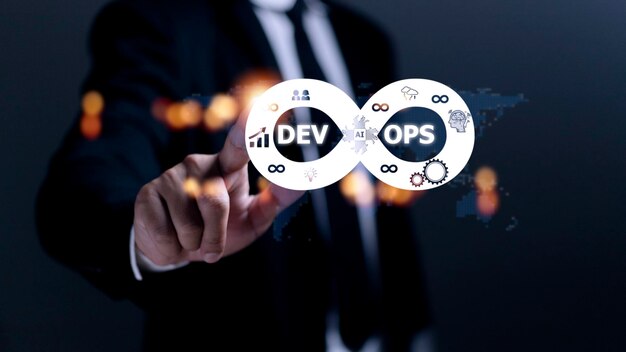Introduction
DevOps is a culture that promotes collaboration between development and operations teams to automate the process of software delivery and infrastructure changes. Terraform, Kubernetes, and CI/CD are pivotal tools in this journey, offering streamlined workflows, improved reliability, and faster time to market. DevOps Best Practices are a set of rules that we need to follow while working with DevOps.
Embracing Infrastructure as Code with Terraform
- Automated Provisioning: Terraform allows for the automated setup of infrastructure, reducing manual errors and ensuring consistency across environments.
- Version Control: Use version control systems with Terraform code to track changes and maintain history.
- Modular Design: Adopt a modular approach for reusable and maintainable code.
Orchestrating Containers with Kubernetes
- Microservices Deployment: Kubernetes excels in managing microservices, offering scalability and flexibility.
- Self-Healing Systems: Utilize Kubernetes’ self-healing capabilities to automatically restart failed containers.
- Resource Optimization: Implement resource limits and autoscaling to optimize infrastructure usage.
Accelerating Deployment with CI/CD
- Pipeline Automation: Automate build, test, and deploy pipelines to reduce manual intervention and improve efficiency.
- Continuous Feedback: Implement continuous feedback mechanisms to quickly identify and resolve issues.
- Security Integration: Embed security checks into CI/CD pipelines for early detection of vulnerabilities.
DevOps Best Practices for Integration
- Comprehensive Testing: DevOps Best Practices
- Prioritize testing at every stage of the CI/CD pipeline to maintain high-quality standards.
- Utilize automated testing tools to ensure thorough coverage and quick feedback loops.
- Implement unit tests, integration tests, and end-to-end tests to validate code changes and configurations.
- Monitoring and Logging: DevOps Best Practices
- Establish robust monitoring and logging practices to gain insights into system behavior and performance.
- Utilize monitoring tools to track key metrics such as response times, error rates, and resource utilization.
- Implement centralized logging to aggregate and analyze logs from different components of the system.
- Set up alerts and notifications to proactively identify and address issues before they impact users.
- Collaboration and Communication: DevOps Best Practices
- Foster a culture of open communication and collaboration among development, operations, and other stakeholders.
- Encourage cross-functional teams to work together towards common goals, sharing knowledge and insights.
- Utilize collaboration tools such as chat platforms, issue trackers, and project management software to facilitate communication and coordination.
- Conduct regular meetings, stand-ups, and retrospectives to review progress, address challenges, and identify areas for improvement.
Conclusion
Integrating Terraform, Kubernetes, and CI/CD into DevOps practices can significantly enhance the efficiency, reliability, and security of software delivery processes. By adopting these best practices, teams can better manage infrastructure, orchestrate containers, and accelerate deployment cycles.
Ready to streamline your DevOps processes and leverage the power of Terraform and Kubernetes? Secure IT Infra offers comprehensive DevOps consulting services, specializing in Terraform and Kubernetes implementations. Whether you need assistance with infrastructure as code, container orchestration, or CI/CD pipeline setup, our expert team is here to help.
Explore our DevOps, Terraform, and Kubernetes service here and unlock the full potential of your software delivery pipelines.








